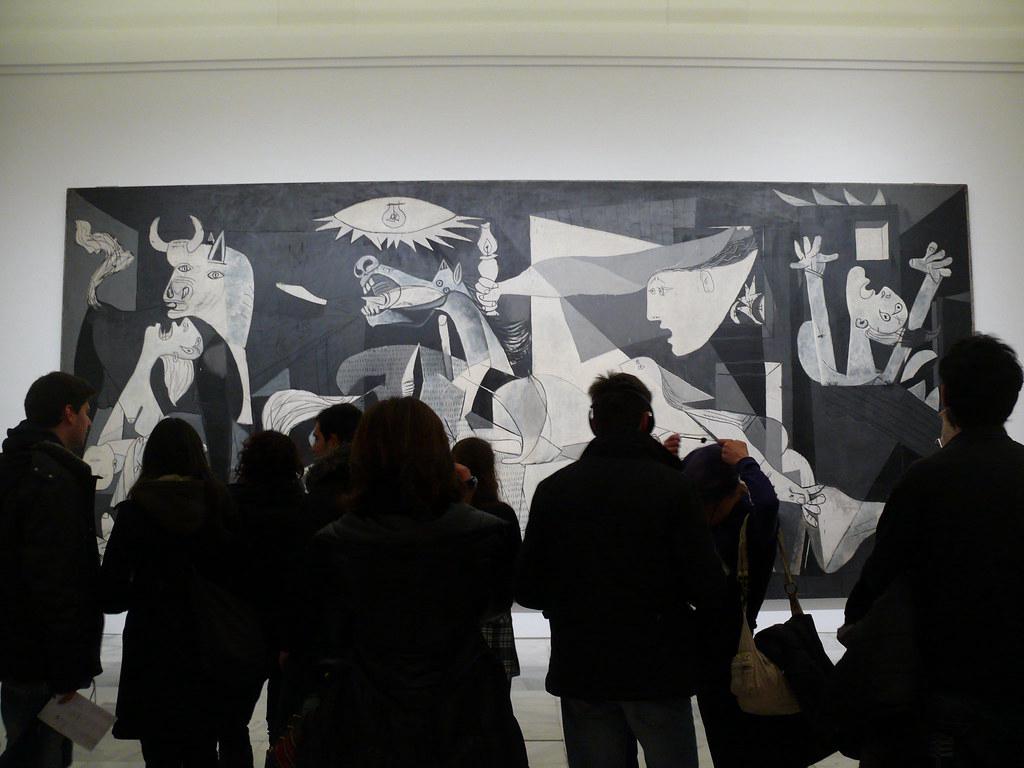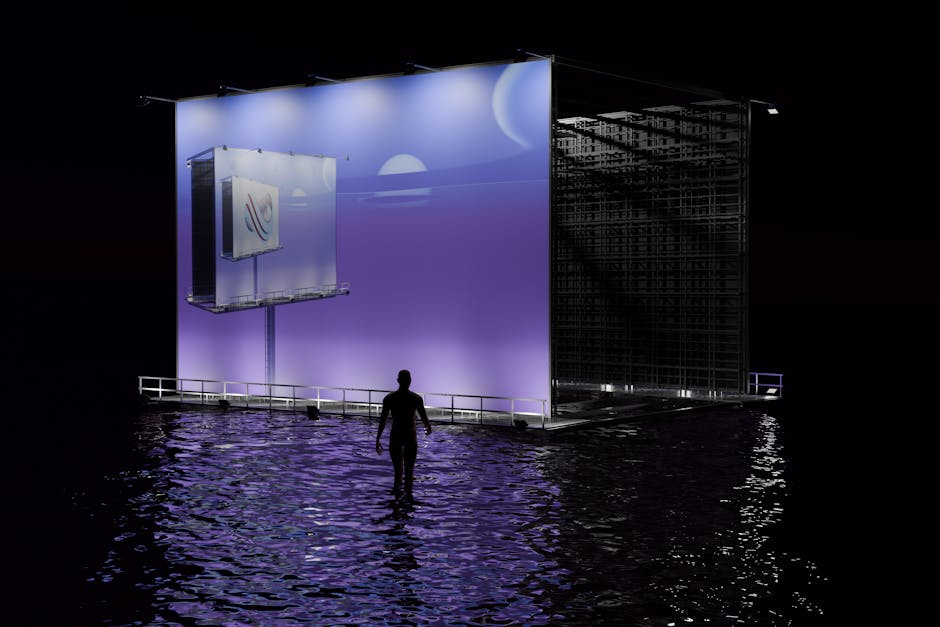Historical Context of Art in Activism
Art has long been a powerful tool for change and a platform for voices often overlooked. Picasso's Guernica, unveiled in 1937, laid bare the tragedy of war, capturing the pain of innocents caught in the crossfire.
In the 1960s, the Guerrilla Girls challenged societal norms with provocative posters highlighting the gender gap in art galleries. Their work sparked conversations that led to real change.
During the 1980s, ACT UP used posters, graphics, and performances to raise awareness and demand justice during the AIDS epidemic. Their visual language spoke louder than words, igniting activism.
From posters in the Paris uprisings of 1968 to protest songs that became anthems of change, art proved an enduring ally in the struggle for equality and justice.
In these movements, art wasn't just an accessory—it was the heartbeat. It encouraged, enraged, and engaged. The canvas became a battleground, and each stroke of paint was a step towards revolution. This fusion of art and activism hasn't faded with time, but has grown more vibrant, fueling ongoing social change.

Digital Activism and Art
In the digital age, the brush has been swapped for the pixel, and protests have spilled over from city squares into the vast, interconnected web. Digital art is now the frontline of modern activism, capable of reaching global audiences at lightning speed.
Social media platforms like Instagram and Twitter have become digital canvases where art is not merely displayed but interacted with and shared. The internet's corridors echo with calls for justice through powerful visuals that provoke thought and inspire change.
Digital art takes various forms—from satirical memes that cut to the heart of political issues, to intricate digital illustrations that capture the emotional truths behind social movements. Artists like those behind The Illuminator have taken activism to the streets and screens, projecting enlightening images onto walls of power structures.
The virtual sphere has offered artists new tools:
- Augmented reality experiences that immerse audiences into social issues
- Interactive web pieces that encourage participation rather than passive observation
The power of digital platforms lies in their potential for virality. Iconic images have catalyzed global movements, becoming symbols of resistance that transcend language and culture.
However, the challenge is ensuring these digital campaigns are not just fleeting sparks but sustained fires of change. When wielded intentionally, digital art can educate, irritate, and activate, nudging the complacent into consciousness and the silent into speech.
As artists explore these new territories, they continue to challenge, provoke, and inspire, using their digital canvasses as catalysts for change. In this age, each digital masterpiece contributes to the panorama of progress, painting a picture of what could be—a more just and vibrant world.

The Role of Memes in Political Discourse
Memes have emerged as formidable agents of change in digital activism—swift, sharp, and highly shareable. What were once seen as internet quirks have blossomed into potent political commentary, crafting stories that ripple across digital landscapes.
Memes encapsulate complex ideas in minimalistic frames, thriving on cultural references and often remixing iconic imagery with clever text. They grab attention, elicit laughter, or challenge conventional thinking, offering audiences an interactive form of satire.
In political discourse, the meme's power lies in its accessibility and virality. Anyone with a decent internet connection and a dash of creativity can create a meme that might potentially reach millions. These digital artifacts wade into the political arena with agility, lampooning political figures or underscoring policy absurdities.
During recent U.S. elections, memes flooded social platforms, often influencing younger voters by framing candidates and policies in relatable terms. The rapid spread of these images helped shape public perception, turning ephemeral online moments into lasting cultural touchstones.
Memes succeed partly because they strike a balance between entertainment and enlightenment. They offer a platform for marginalized voices to inject their perspectives into public discourse. By reshaping complex debates into digestible quips, memes lower barriers to participation.
However, memes are not without limitations:
- Their transitory nature can lead to oversimplification, diluting the nuances of pressing issues
- "Meme fatigue" risks insulating audiences within echo chambers rather than igniting sustained dialogue
Ultimately, memes have carved out a distinct space in digital political activism. They are the zeitgeist expressed in pixels—a testament to how art continually evolves to meet the needs of its time. In a landscape where speed and shareability reign supreme, memes sustain the momentum of movements, fostering community and sparking contemplation with each click.
Augmented Reality and Virtual Installations
Augmented reality (AR) and virtual reality (VR) have opened new horizons in art activism, offering immersive and interactive environments that challenge how audiences perceive and engage with social issues.
AR allows artists to overlay digital sculptures and messages onto real-world locations, turning cityscapes into canvases bursting with socio-political commentary. Artists like Nancy Baker Cahill have used AR to create participatory artworks that viewers can explore from different angles, finding personal connections to the issues at hand.
VR transports viewers into carefully crafted worlds that embed them in contexts of conflict, environmental devastation, or societal inequality. Projects like Marina Abramović's Project Witness immerse users in war-ravaged areas, evoking empathy and understanding beyond traditional storytelling.
The hallmark of AR and VR in art activism is their ability to dissolve barriers between observer and observed, transforming passive viewers into active participants. By stepping into these digital worlds, participants engage in a conversation, confronting depicted realities and their own role within these stories.
However, these technologies face challenges:
- Access to VR headsets and AR-compatible devices is not yet universal, raising questions of privilege
- As technology advances and costs decrease, the potential for wider accessibility grows
While AR and VR can galvanize and educate, they are most potent when paired with tangible, real-world actions. These digital experiences invite us to see beyond what's directly in front of us and envision broader currents of change rippling through virtual and real worlds alike.

Challenges and Criticisms of Digital Art Activism
Digital art activism faces several challenges that can dampen its transformative potential. One such challenge is the oversimplification of complex issues. The digital sphere's emphasis on immediacy and brevity risks flattening multifaceted topics into mere pixels, potentially leading to shallow engagement.
Another issue is performative activism—actions that emphasize appearance over substance. The ease of sharing artwork or posting solidarity statements can create a deceptive sense of participation, obscuring the need for sustained, informed action.
Censorship on digital platforms also poses a significant challenge. Social media sites provide a megaphone for voices but come with algorithms and guidelines that can restrict the visibility of boundary-pushing art. Such restrictions can stifle dissenting voices in favor of sanitized content.
Despite these hurdles, artists and activists are finding ways to subvert limiting systems, employing creativity in both their art and strategies for avoiding suppression. They use metaphorical language, veiled imagery, or alternative platforms that prioritize freedom of speech.
The digital art activism movement must continually negotiate these challenges, finding ways to deepen engagements beyond fleeting interactions and fostering genuine reflection and action. It's a reminder that while digital art can ignite sparks, lasting change requires kindling from both digital and physical realms.
Addressing these issues requires adaptability and persistence. Amidst the hurdles of oversimplification, performative gestures, and censorship lies the potential to harness digital art as a catalyst for enduring transformation.
Art continues to be a powerful catalyst for change, intertwining with activism to challenge and inspire. As digital platforms expand the reach of creative expression, the potential for art to provoke thought and drive social progress remains vital.
- Belk R, Wallendorf M, Fernandez KV. Non-fungible tokens as disruptive investment. Journal of Consumer Affairs. 2022;56(2):456-479.
- Chen Y, Friedmann E. The non-fungible token (NFT) market and its relationship with Bitcoin and Ethereum. Quantitative Finance and Economics. 2023;7(1):41-57.
- Murray S. The present and future of NFTs. Art in America. 2021;109(5):46-53.
- Park S, Kim S, Kang H, et al. NFT and the art market: Current state and future prospects. Korean Journal of Arts Management. 2022;22:91-116.
- Poposki Z. Crypto-aesthetics: Art and NFTs. Art Journal. 2024;83(1):112-123.





















